Nik Strong-Cvetich is a surfer, conservationist, and CEO of Save The Waves Coalition. He grew up on a small car-free island in Washington State, where the ocean shaped daily life. His father was a commercial fisherman, and Nik spent his childhood boating between islands and exploring creeks. One day, he returned to find a creek he loved buried under a parking lot, debris and oil running through the water. “That taught me early on, how everything runs downstream,” he recalls.
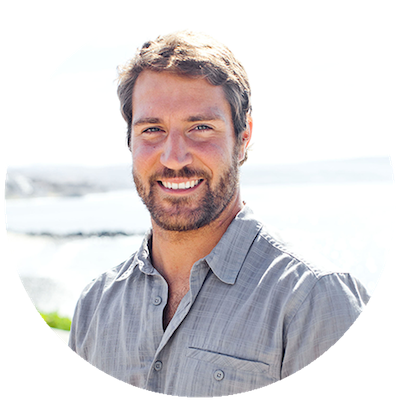
Surfing became both a passion and lens; revealing eroding coastlines, declining water quality, and the urgent need to protect surf ecosystems. Strong-Cvetich approaches conservation pragmatically, acknowledging self-interest as a powerful driver. For Nik protecting a wave means protecting the entire ecosystem that sustains it, so surfers and local communities can continue to thrive alongside the ocean.
Lukas Brunner: Nik, what role has surfing played in your journey towards conservation?
Nik Strong-Cvetich: I learned about conservation growing up in Washington State, seeing things like a creek destroyed for a parking lot. Surfing there was hard—the waves were far away, the water was cold, and it took effort. I moved to Oregon, then to California, where I’ve lived for 20 years now.
In California, water quality is a more visible issue. You see how urbanisation affects coasts. The same way a parking lot could destroy a creek, a hotel or jetty could destroy a wave. You ask, why would we do this?
Climate change adds another layer and surfers notice these changes daily. Surfing is exciting, but it’s also deeply connected to the environment—you can’t separate the two.
Surfing is exciting, but it’s also deeply connected to the environment—you can’t separate the two.
LB: What factors do you think shape surfers’ awareness of the change at their surf spots and how they link them to climate change?
NS: It depends on where and how you grew up surfing. In Southern California, you can drive to a parking lot and step onto the beach—you don’t necessarily register that you’re in an ecosystem. In Washington, surfing felt like stepping into the wilderness. That context shapes perception.
Politics shape views too, but surfers—regardless of politics—don’t want to get sick. If you surf in polluted water, it doesn’t matter how good the waves are; if you get sick, it ruins the experience. That kind of self-interest is a powerful motivator.
So, are surfers inherently environmentalists? Not always. But most are self-interested—they care about waves, and the barriers to surfing often are environmental. By default, many act like environmentalists, even if they don’t call themselves one.
If a wave they love is threatened, they’ll defend it, whether or not they identify as environmentalists. That self-interest can be powerful—maybe even more sustainable than treating environmentalism as an identity.
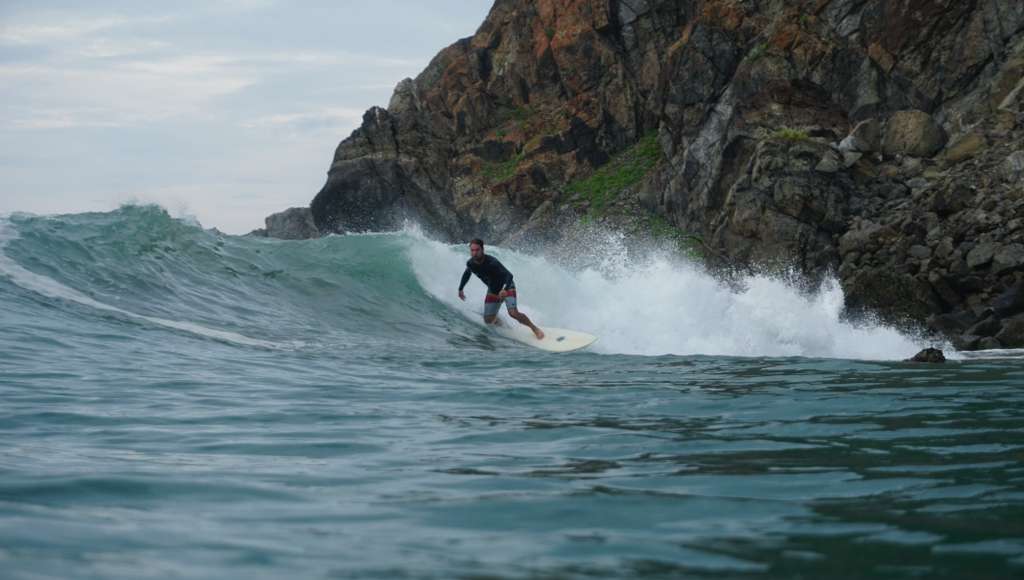
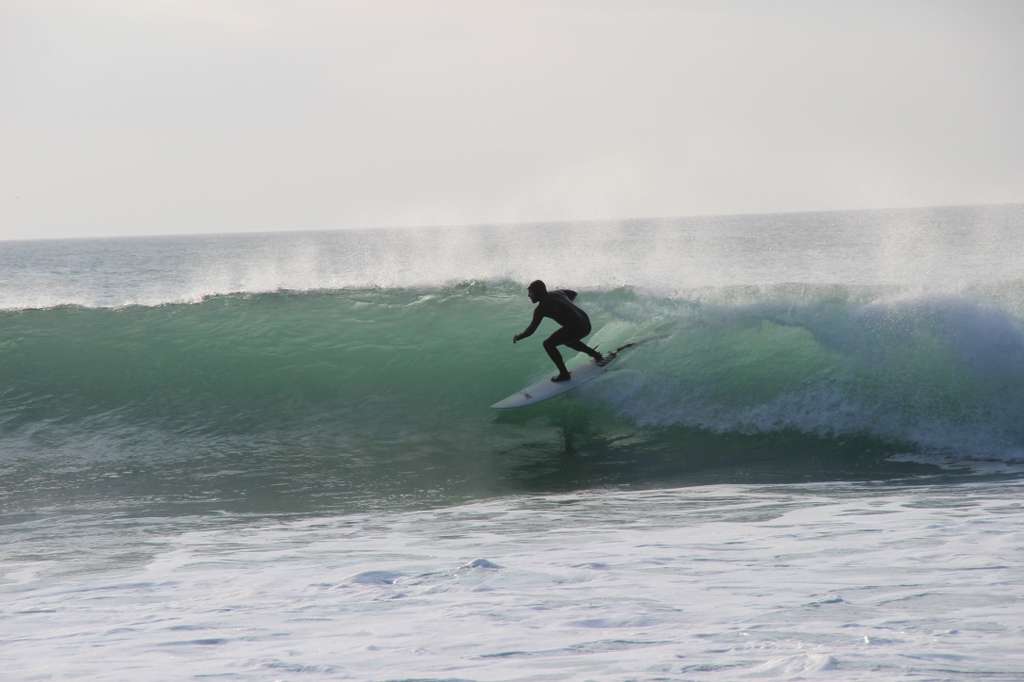
If you surf in polluted water, it doesn’t matter how good the waves are, if you get sick, it ruins the experience. That kind of self-interest is a powerful motivator.
LB: What about the social dimensions of surfing and surf tourism? Many surfers I’ve spoken to express concern about the impact of surf tourism on local communities and environments. How can surfers navigate this?
NS: What about the social dimensions of surfing and surf tourism? Many surfers I’ve spoken to express concern about the impact of surf tourism on local communities and environments. How can surfers navigate this?
NS: Surfers don’t really have a choice about caring for the environment—if they want good waves, it shapes their behavior.
Surf tourism isn’t perfect and can be destructive, but it can also drive positive change. Compared to many coastal uses, surfing has relatively low impact. Development is tied to environmental health—if pollution or crowding get too bad, people stop coming. That creates a self-interest in keeping places healthy.
Overall, I think surfing is a net positive. But surfers’ ethics could improve—caring for the people and places they visit, avoiding extractive behavior. People are selfish, but if those actions align with protecting the environment it would benefit the greater good.
LB: Let’s talk about Save the Waves. Can you tell us about the organisation and the concept of a surf ecosystem?
NS: We’re an international NGO dedicated to protecting surf ecosystems. A surf ecosystem isn’t just the wave, it’s the conditions that make it break; the biodiversity, community, and culture connected to it. If you care about a wave, you end up caring about everything tied to it.
That’s why the surf ecosystem idea is powerful: it protects the wave and the whole system around it. Teahupoʻo in Tahiti is a great example. A healthy deep reef shelf and a valley river that carved the reef pass over millennia created its iconic wave. The reef supports biodiversity, sustains fisheries, and underpins the local community’s economy and culture. Some of the world’s best surfers come from Tahiti because of that geography. Protecting Teahupoʻo means protecting watershed, reef, sport, ecology, culture, and economy—it’s all connected.
A surf ecosystem isn’t just the wave, it’s the conditions that make it break; the biodiversity, community, and culture connected to it.
LB: What about STW’s concept of surfonomics—where does that come into play?
NS: Surfonomics uses economic data to show the value of surf ecosystems. Decision makers often don’t know or care about surfing. It’s only when you use economic concepts that it becomes a common language to show value. Often, decision makers haven’t thought about surfing as a natural resource, economic driver, or recreational asset.
No one budgets for a surf break like they would a soccer field. But once you show that a wave might generate $35 million annually, it suddenly matters. They see it as infrastructure worth protecting. Suddenly it’s a priority. Along with other community investments, they see that the surf break—the surf ecosystem—generates real economic value. They understand that they should protect it, consider what damages it, and include it in planning. Especially in the context of climate change—municipalities spend money shoring up infrastructure, but you might be losing a piece of infrastructure if you don’t value it.
It’s not the complete value—there are cultural and experiential values you can’t put a price on. But if you don’t articulate it, it’s worth zero dollars on paper.
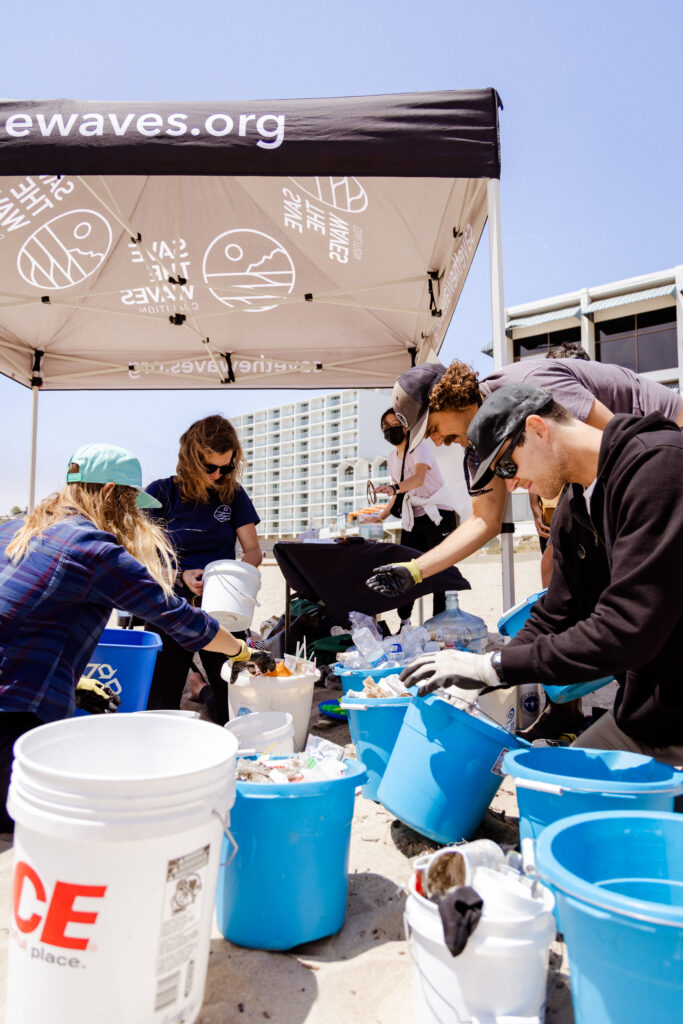
LB: How does STW actually go about protecting a place?
NS: We use a three-part model designed not just to protect a single wave, but to safeguard an entire place effectively and for the long term. This model has three key components: legal and spatial designation, ongoing stewardship, and strong local legitimacy and support.
You need to be able to clearly define what place you’re protecting. It’s not “everything everywhere.” You draw a boundary around a particular location and say, “This is it.” Then you define what activities are allowed or not allowed within that space. You need enforceable guidelines so you’re not just symbolically protecting something—you’re protecting and managing for specific outcomes.
Stewardship includes managing threats like plastic pollution, non-point-source water runoff, coastal erosion, and sea level rise. These issues often fall outside traditional regulation, but they’re critical. You could declare a protected area—so, step one—and then do nothing. In that case, it’s not really protected. Active stewardship is essential.
The local community is really the most important part. Are they mobilised? Do they understand and support the effort? Are they standing up for the place? Protected areas can be taken away—we know that now. But if local people care about it, their support won’t disappear. In many protected areas, the community doesn’t even know the designation exists. That’s a problem.
So for true protection, you need an institutional/legal framework, local stewardship, and an active local community and legitimacy. All three are necessary.
Protected areas can be taken away—we know that now. But if local people care about it, their support won’t disappear.

LB: How have political shifts in the United States undermined institutions that support environmental protection, and what alternative approaches—beyond politics—do you see for building resilience?
NS: You often only realise how much institutions matter when they’re gone. The National Oceanographic and Atmospheric Administration (NOAA), for example, provides climate and surf data that everyone relies on. National parks are another: iconic, accessible spaces open to all. There’s no efficiency gained by dismantling them.
These institutions aren’t ideological, they provide clean water, clean air, disaster response. Tearing them down is counterproductive. It wastes resources and undermines essential infrastructure. Public goods need to be managed for everyone—that’s a basic role of government.
When institutions are dismantled, communities step in to create their own. They may be smaller, but they’re more resilient because they grow from the ground up. That’s how Save The Waves works—helping locals organise, decide what they want, and support each other.
Grassroots efforts alone won’t solve climate change, but they build political power over time. Resilience comes from communities caring for the places that matter to them.
When institutions are dismantled, communities step in to create their own. They may be smaller, but they’re more resilient because they grow from the ground up.
LB: That connects to Save the Waves’ coalition model. Could you elaborate?
NS: Wherever we work, we ask: who needs to be involved, who has the skills and goals? It’s collaborative.
Every World Surfing Reserve is a committee of local governments, surf groups, NGOs, academics, and businesses. That’s why they gain legitimacy—not because we declare them, but because communities co-create them.
Coalitions make protection stronger. It’s a bottom-up approach involving lots of groups, working together. Lots of hands make light work, and having many involved makes it harder to target any one group. If it’s just Save the Waves, it’s easier to shut us down. You could sue us or attack us—it’s not hard to take down one institution. But with a coalition, it’s much tougher—imagine lawsuits against multiple actors or smear campaigns targeting different organisations. It’s expensive and complicated.

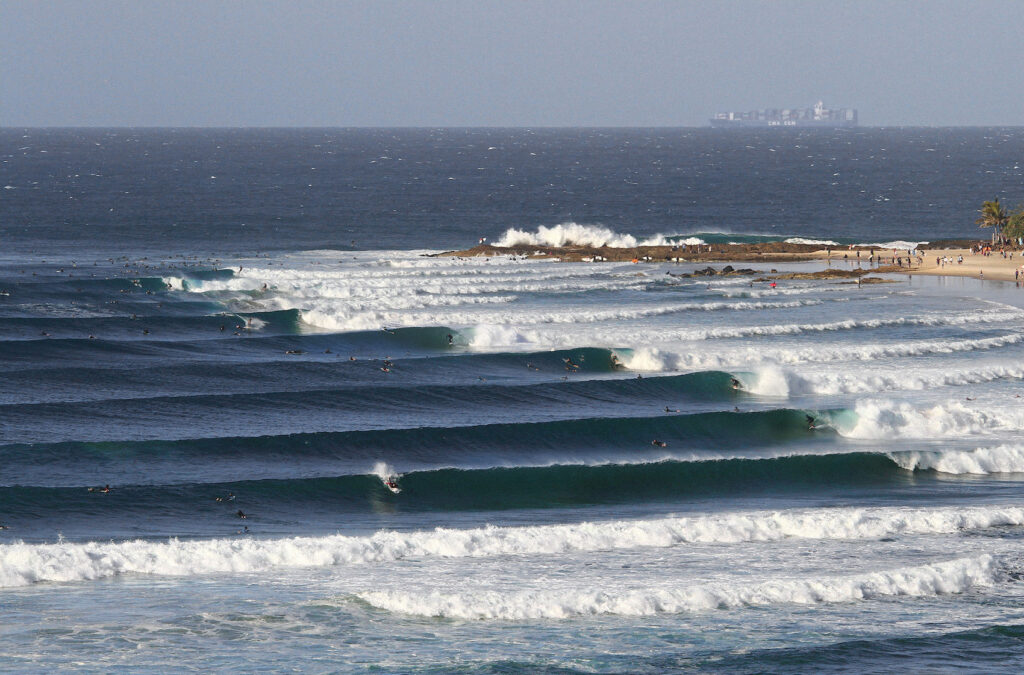
LB: What’s your view on the surf industry’s responsibility toward conservation?
NS: I remember that once, in a conference: someone said that the surf industry was everyone in that room—pro surfers, shapers, environmentalists—it’s whoever cares about the wave, rides it, builds the boards, or manufactures the wetsuits. I think that’s still true.
People in the industry are rethinking their values and articulating the environmental changes they’ve witnessed. Messaging is ramping up even as resources tighten and the industry shrinks. Media, economic shifts, and changing consumer values are reshaping the industry.
Waves are increasingly used in marketing, so if a wave dies, there aren’t unlimited replacements. Conservation is no longer abstract, rather directly tied to their product. Larger NGOs and the World Surf League are starting to integrate the surf ecosystem idea as a more interesting way to do conservation.
So yeah, the role is to understand how surf ecosystems are vulnerable and put resources into protecting them. Again, it’s very pragmatic—it’s in your self-interest to care about this.
LB: Looking ahead, what role do you think surfers can play in shaping the future of surfing and conservation?
NS: Pro surfers definitely have cultural influence, and many care about the environment although it’s complicated as you’ve got the tour pros who are basically training 24/7 and traveling between events, the struggling pros who don’t have enough resources but surf really well. And then the traveling free surfers—like big wave riders—who’ve figured out ways to make money outside the tour. Those free surfers tend to be more focused on environmental issues.
Pro surfers have a role and platform to talk about conservation, and many use it. Like Kelly Slater posting about the pollution issue in Bali and Indonesia—he’s upset and motivated to do something.
If the league or sponsors incentivised surfers to partner with conservation NGOs and made it part of their role, that could create real impact and help them meet their goals.
What’s really interesting is watching older pros from the seventies and eighties evolve. They were super famous, wealthy, and the kings of surfing magazines. Many have migrated toward caring deeply about conservation after seeing how the environment changed where they surfed. Guys like Sean Thompson, Rabbit Bartholomew, Jeff Hackman—the founder of Quiksilver—and Greg Long, a big wave surfer and Patagonia ambassador, have all made environmentalism central to their lives.
It’s becoming a career pathway, too. Surfers like Cliff Capona have found a sweet spot combining conservation and surfing that has impact and actually improves their careers.
Not every pro can do that, but the potential is there. The league and sponsors have some initiatives, but conservation often feels like a side thing rather than part of their main objectives. If the league or sponsors incentivised surfers to partner with conservation NGOs and made it part of their role, that could create real impact and help them meet their goals.
Looking ahead, I think surfing and conservation will come closer together. People will need the ocean more—for wellness and mental health. And it’ll be less about performance or equipment, more about connecting with the ocean itself.
So what does that mean for conservation? I think that the act of connecting with the ocean breeds more people who care about conservation. They’ll still care about visible things like plastics and trash, but they’ll also be motivated by climate change—how the ocean is changing rapidly and what they can do about it.
That’s going to be front and center. People will care about the ocean more, be in it more, and think deeply about what those changes mean for their time in the water.